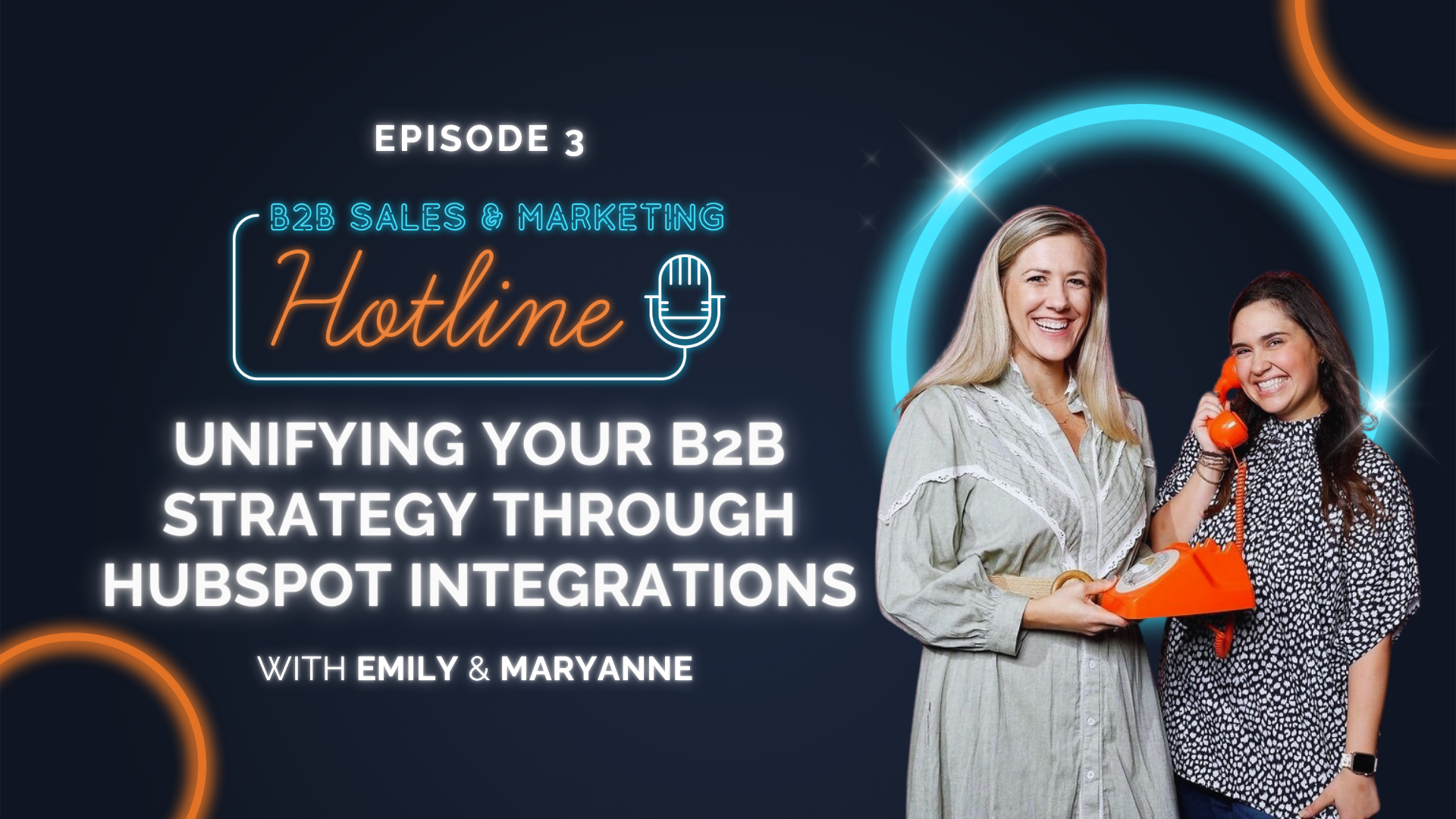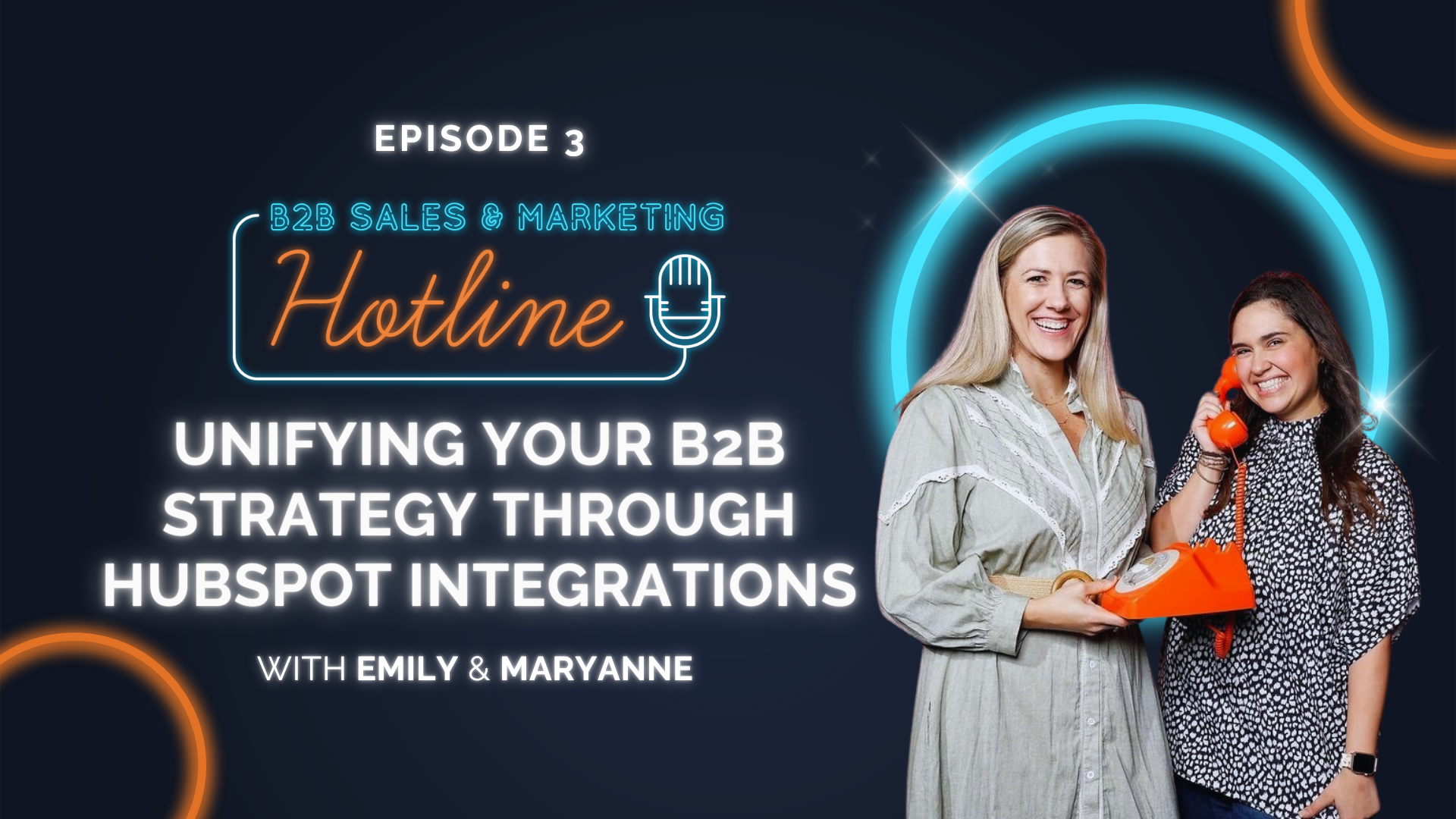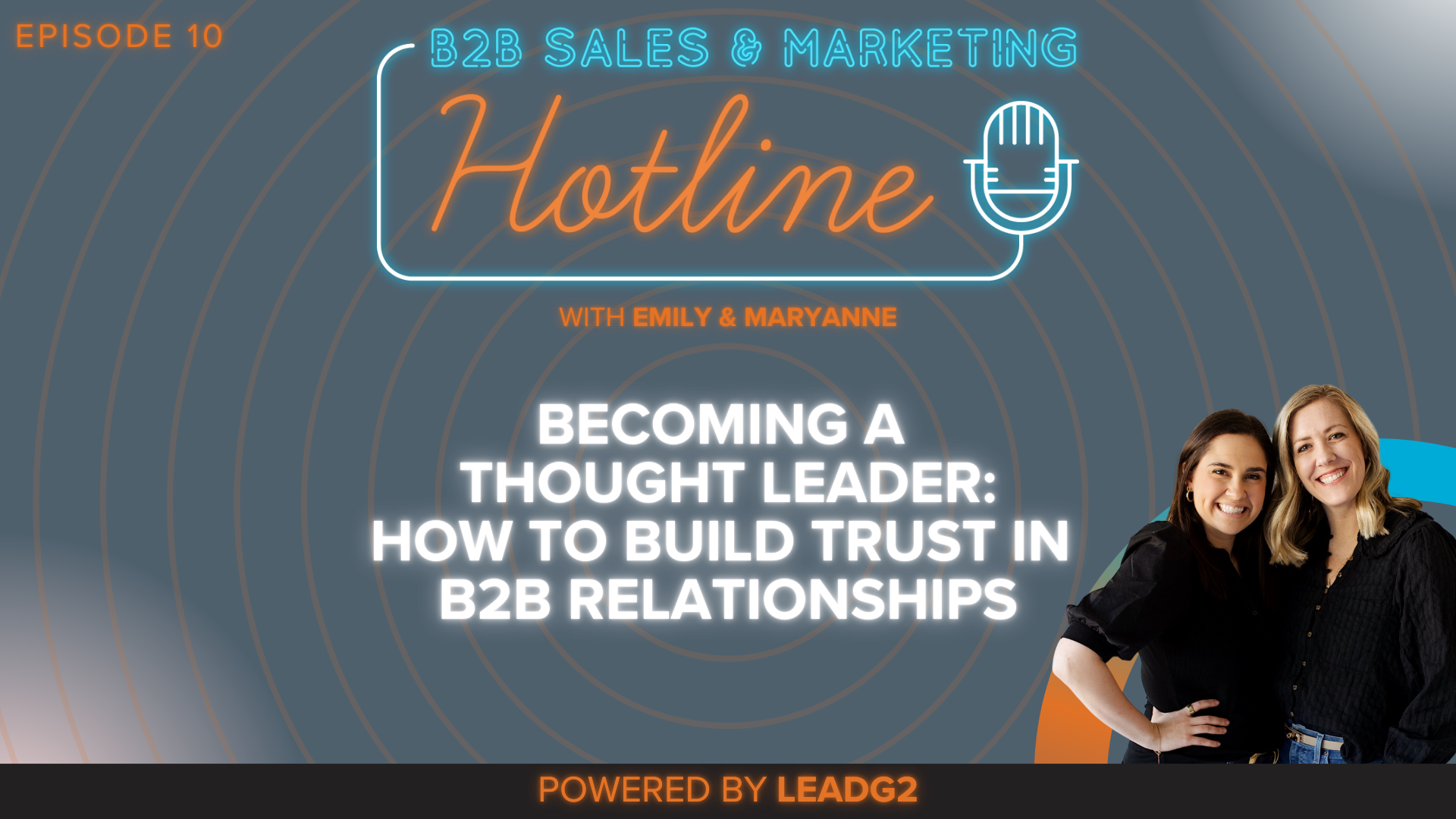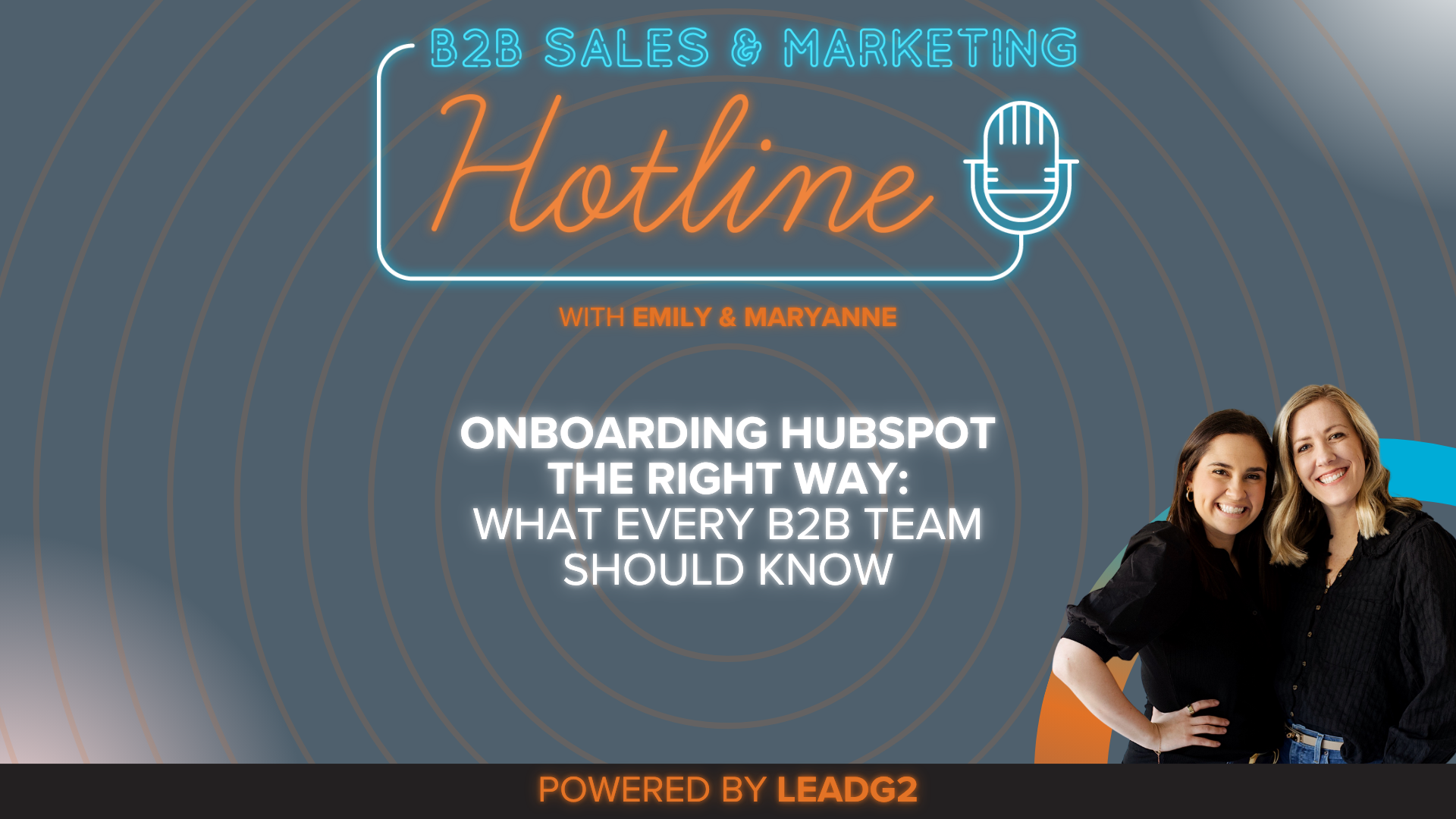

In this episode of The B2B Sales & Marketing Hotline, we're exploring the world of HubSpot integrations to help you craft a unified B2B strategy. While this may be an intimidating topic for many, it's applicable to businesses small, medium, and large. All of them find themselves working with integrations.
Here, you'll learn:
-
How connecting HubSpot with other tools can streamline your operations and make HubSpot your "single source of truth."
-
How to conduct a tech audit to identify integration opportunities and understand the importance of maintaining these connections.
-
Plus, Maryanne & Emily address common fears around cost, complexity, and security, offering insights on how to manage them effectively.

Identifying Essential Tools for Seamless Integration
To realize the full potential of HubSpot's integration capabilities, it's crucial to identify which tools are essential for your specific business needs.
Whether you're a small start-up or an established corporation, understanding your current tech stack and how each tool contributes to your workflow is a fundamental step.
Begin by conducting a comprehensive tech audit.
Evaluate the platforms your teams utilize daily, such as CRM systems, email marketing tools, social media platforms, and project management software. Determine which repetitive tasks can be streamlined through integration with HubSpot.
By aligning your tools with business objectives, you can ensure that your tech stack supports your overall strategy effectively.
Streamlining Processes with HubSpot's Extensive Options
HubSpot offers a vast array of integration options, ranging from popular CRMs like Salesforce to email platforms like Outlook and Gmail. These integrations are designed to streamline various business processes, reducing the need for multiple logins and separate systems.
For instance, integrating your email platform with HubSpot allows for automatic logging of communications. This ensures that all interactions are documented within your CRM.
Similarly, connecting project management tools like Asana or Trello can enhance task management by linking project updates directly to relevant HubSpot records.
This connectivity not only saves time but also enhances productivity by ensuring that all team members have access to the same information.
Enhancing User Experience Through Integration
A significant advantage of HubSpot integrations is the improved user experience they deliver.
When all customer interactions and data points are connected and visible within HubSpot, businesses can provide a more seamless and personalized experience. That way, as Emily says in the episode, HubSpot becomes your "single source of truth."
For example, integrating payment processing tools like Stripe allows businesses to offer a smooth transaction process directly from their HubSpot landing pages. This approach ensures that customers can complete purchases without being redirected to external sites, thereby reducing friction and enhancing satisfaction.
Additionally, integrations with platforms like Zoom or Microsoft Teams can streamline virtual meeting setups, ensuring that all communications are efficiently managed within HubSpot.
Overcoming Common Integration Challenges
While the benefits of integrating HubSpot with other tools are clear, businesses may encounter challenges during implementation. Common issues include errors arising from system updates or misconfigurations, which can disrupt workflows and lead to data inconsistencies.
To mitigate these challenges, it's essential to approach integrations as ongoing projects rather than one-time setups.
Regularly review and audit your integrations to ensure they remain functional and aligned with your business needs. This proactive approach will help you identify and resolve potential issues before they impact operations.
Furthermore, educating your team about the importance of maintaining integration health is crucial. Encourage regular checks and provide training on how to troubleshoot common problems. By fostering a culture of continuous improvement, you can ensure that your integrations remain robust and effective.
Maximizing Efficiency with a Unified B2B Strategy
A unified B2B strategy is the hallmark of a successful business in today's competitive landscape. By harnessing the power of HubSpot integrations, companies can streamline their operations, enhance customer experiences, and drive sustainable growth.
The key to maximizing efficiency lies in understanding your unique business needs and leveraging the appropriate integrations to support them. By doing so, you can create a seamless ecosystem where all your tools work in harmony, enabling your teams to focus on strategic initiatives rather than mundane administrative tasks.
Ultimately, embracing HubSpot integrations can transform your B2B strategy, providing a solid foundation for future innovation and success. As you embark on this journey, remember that the benefits of integration extend beyond operational efficiency—they also enhance your ability to deliver value to your customers, fostering long-term loyalty and growth.

How B2B Podcasts Are Revolutionizing Marketing Strategies
Podcasts have transformed from a niche medium into a mainstream marketing tool. Over the past few years, B2B companies have increasingly embraced...
.png?width=2250&height=647&name=LeadG2-logo_(2).png)
 Brent Tripp
Brent Tripp



